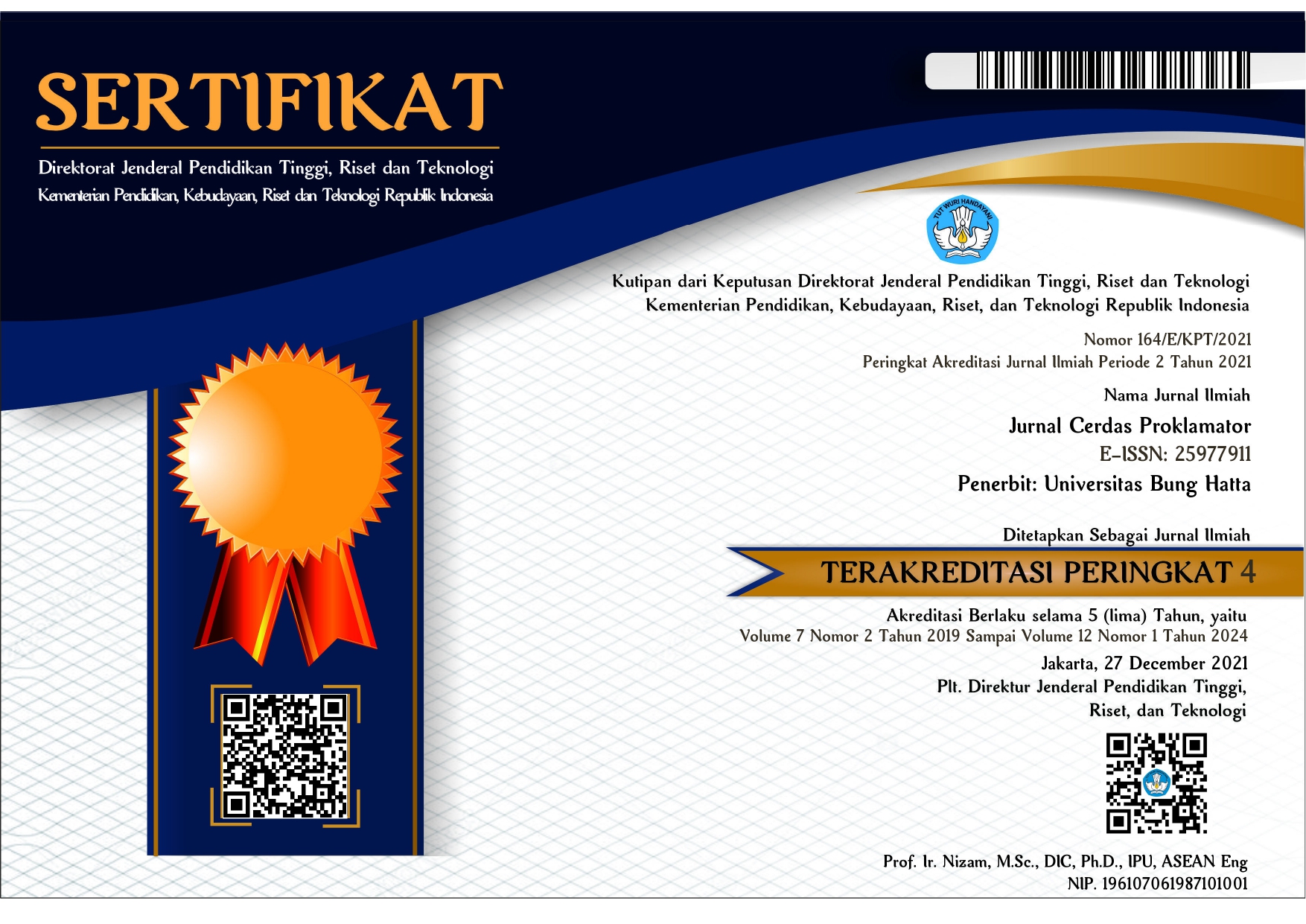PENERAPAN MODEL PEMBELAJARAN KOOPERATIF TIPE TWO STAY TWO STRAY DALAM PEMBELAJARAN IPA SISWA KELAS IV SDN 34 AIR PACAH PADANG
DOI:
https://doi.org/10.37301/jcp.v8i1.57Keywords:
IPA, Two Stay Two Stray, Study ResultAbstract
This research aims to describe the difference in learning outcomes of cognitive and affective aspects of IPA students by applying cooperative learning model type Two Stay Two Stray with conventional method in class IV SD 34 Air Pacah Padang. The type of research is experimental research. Place of study at SD 34 Air Pacah Padang with the number of research sample there are two classes that is student class IV A and IV B with amount of student 49 student. Analyze technique using t -test. The results showed that the learning outcomes of cognitive aspects of the average IPA in the experimental class is 86.25 and the control class is 74.8. Hypothesis testing using t-test shows tcount> ttable, with tcount of 2,91 and ttable value equal to 1,68 at significant level significant 0,05. The learning outcomes of the affective aspects of experimental class and control class with experimental grade grade were 75.83 and 70.63. Hypothesis testing using t-test shows tcount> ttable, with tcount value of 1.81 and ttable value equal to 1.68 at significant level significant 0,05. Based on the result of this research, it can be concluded that there is a significa nt difference between the cognitive aspect and affective of the experimental and control class students using the Two Stay Two Stray learning model
References
Istarani dan M. Ridwan. 2015. 50 Tipe Strategi dan Teknik Pembelajaran Kooperatif. Medan : Media Persada.
Sugiyono. 2012. Metode Penelitian Pendidikan Pendekatan kuantitatif, Kualitatif, dan R&D.Bandung : Alfabeta.
Susanto, Ahmad. 2014. Teori Belajar Pembelajaran di Sekolah Dasar. Jakarta: Prenada Media Group
Trianto. 2014. Model Pembelajaran Terpadu. Jakarta: Bumi Aksara.
Downloads
Published
Issue
Section
License
Copy right in each article belong to the authors.
1. The author acknowledges that the Journal Cerdas Proklamator as a publisher who publishes for the first time with the
Creative Commons Attribution 4.0 International License.
2. The Author can enter the writing separately, manage the non exclusive distribution of manuscripts that have been published in this journal into the other versions (eg sent to the repository of the author's institution, publication in book, etc), by acknowledge that the manuscript was first published in the Jurnal Cerdas Proklamator.

























